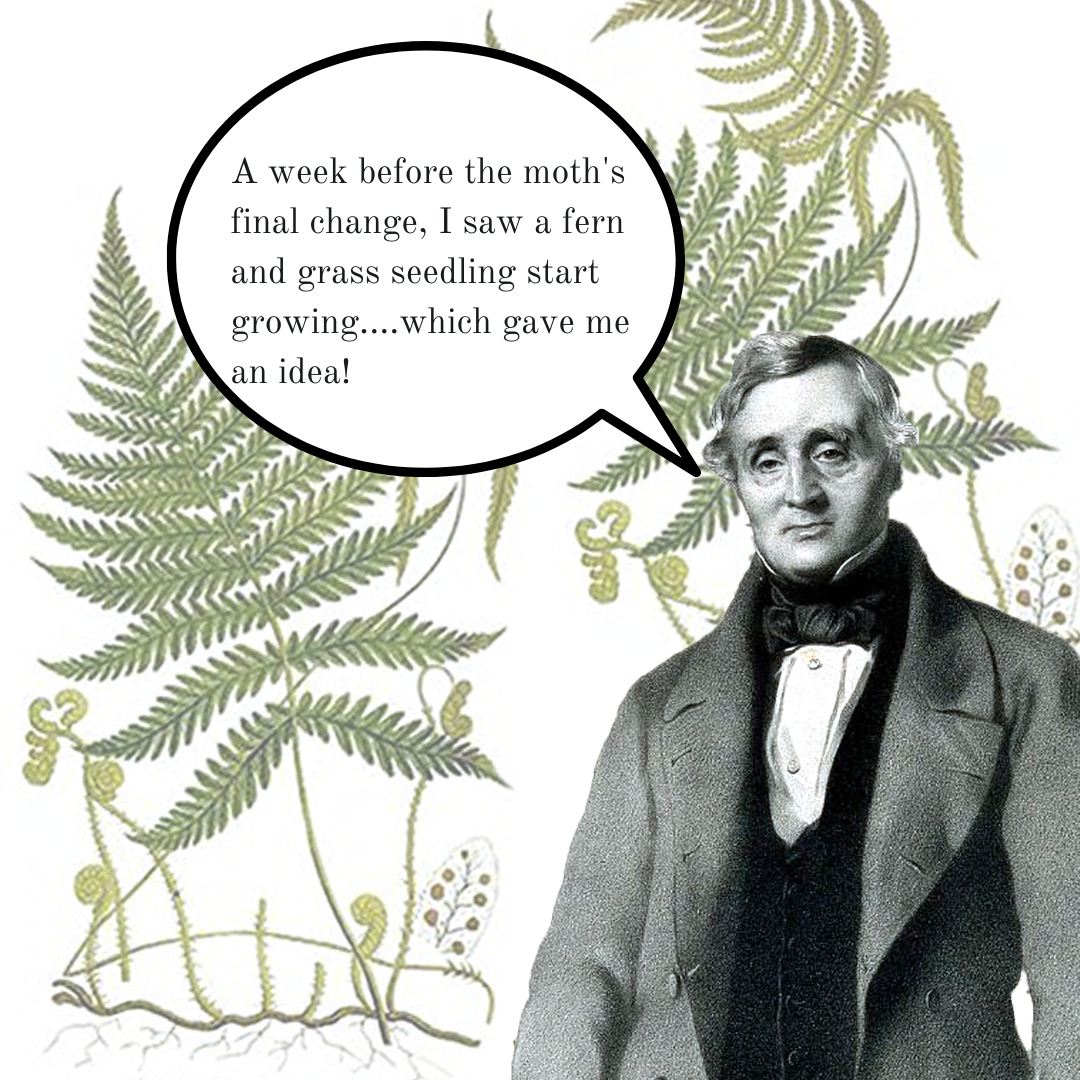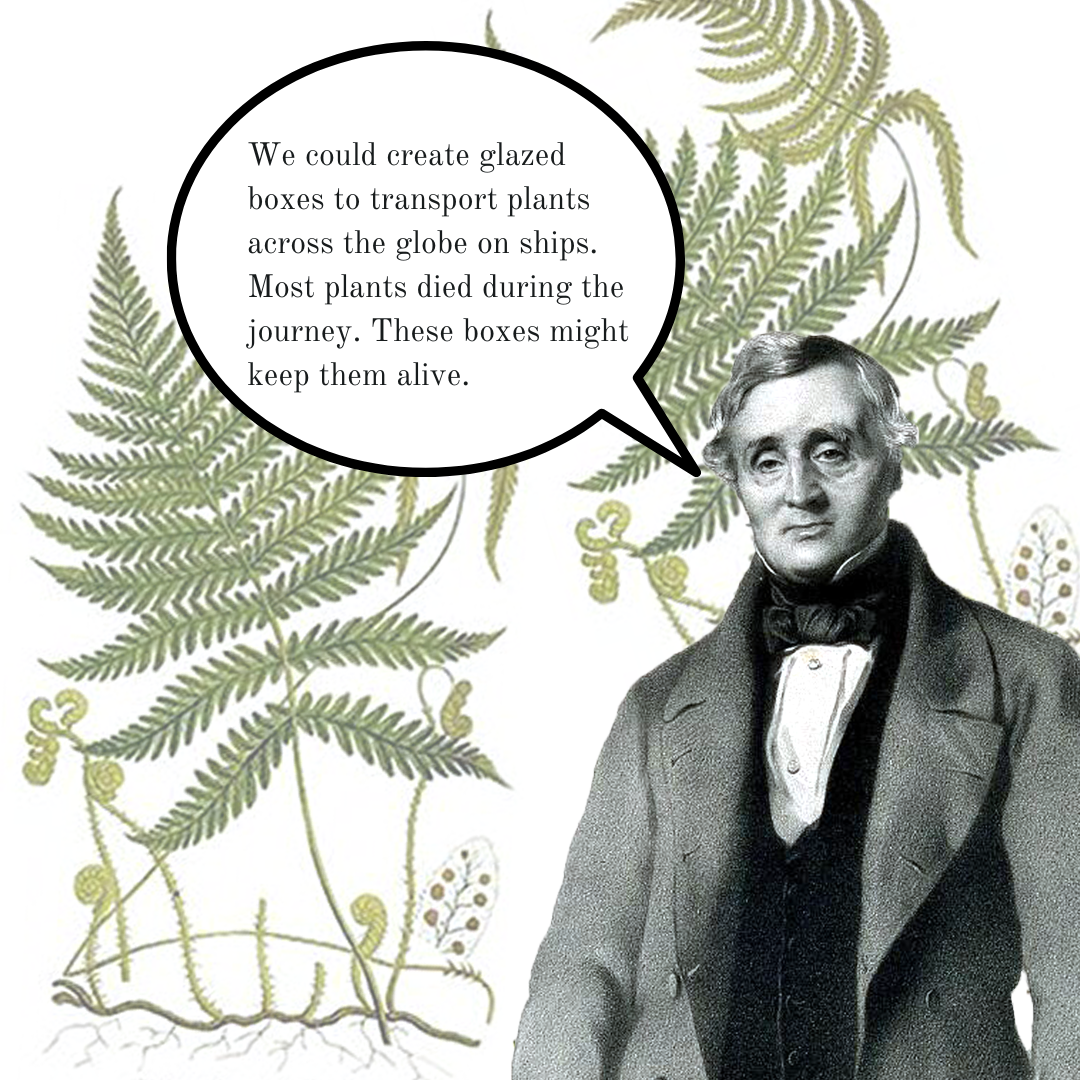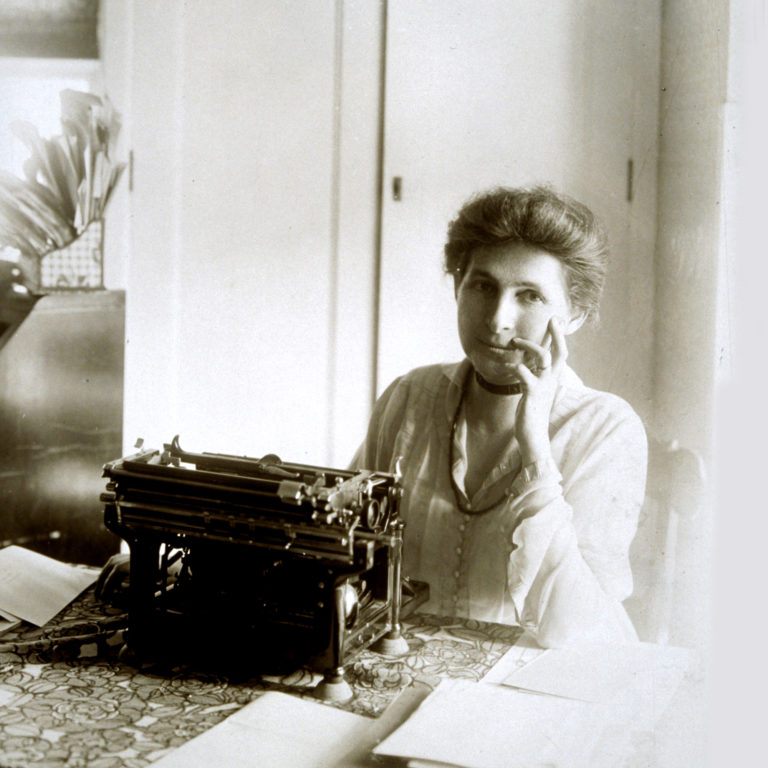The History of the Wardian Case
Nathaniel Bagshaw Ward (1791-1868) was a physician and amateur naturalist.
Like most Victorians, Ward loved ferns. When he was younger, he wanted to make an old wall covered with ferns and moss.
He created an elaborate fern wall, but all the ferns died despite his efforts to keep the plants alive. He thought the polluted air of London was to blame.
In the summer of 1829, he buried a Sphinx moth chrysalis in some leaf mold and put it inside a wide mouth glass jar so he could watch the chrysalis transform into a moth. That’s what Victorians did instead of looking at their smart phones.
While he was waiting for the insect to transform, he noticed moisture condensed on the surface of the glass and then returned back to the soil.
About a week before the insect’s transformation, a fern seedling and blade of grass started growing in the jar. After all the effort he gave to his fern wall, Dr. Ward was shocked to see a fern seedling spontaneously appear in the jar.
This gave Dr. Ward an idea.
He created an enclosed glazed case to keep plants growing. If these cases worked, all his plant hunting friends could use them to transport live plants across the world. At the time, most plants never survived their journey back home.
To prove out his design, Ward filled two cases with ferns, grasses, etc. and sent them to Sydney, Australia in June 1833. Ward’s friend Capt. Mallard was in charge of transporting the cases and when they arrived in Sydney, Capt. Millard confirmed the plants were alive.
In February 1884, the cases were refilled with plants from Sydney and sent back to England. After an eight month journey, they arrived in England. The plants survived the return trip.
The rest is history. The case became known as the Wardian case, named after its inventor.
The Wardian Case Moved Plants Across the Globe
In the nineteenth century, plant hunters traveled long distances to find new plants for cultivation.
Keeping plants alive during a ship voyage was challenging. Salt air, extreme temperatures and lack of fresh water made it hard for plants to live. Most of the plants collected on plant-hunting trips never survived the journey home.
That changed with the introduction of the wood and glass case developed by Dr. Nathaniel Bagshaw Ward. His case, the wardian case, allowed plants to be safely transported over long distances.
It was a simple but effective design.
The case acted like a miniature greenhouse in the form of a rectangular box, typically made of glass and wood, with a removable lid. The bottom of the box contained a layer of gravel and soil.
Plants were placed in the soil, and the box was sealed with a lid, creating a micro climate that was ideal for growing plants.
A Simple Case with Big Global Impact
The influence of the Wardian case can’t be understated.
Although the cases allowed for the safe transport of plants, there was a dark side. The cases inadvertently spread invasive species. And because the cases transported cash crops like tea, sugar, rubber, and cotton, there was an incredible human toll.
I don’t think Dr. Ward imagined the global impact his simple wood and glass case would make. It’s remarkable.



















